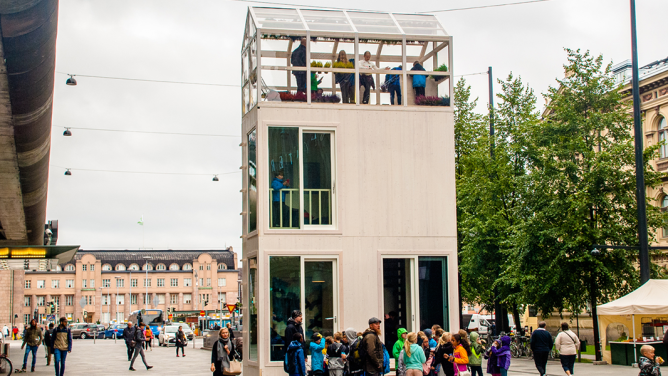Cities going electric
In France, the “droit à la prise” (literary, the right to a power socket) became part of French law in 2014. This means that anyone living in a shared apartment block has the right to have a charging point installed in their building’s car park. The increase in charging stations is undoubtedly the most noticeable transformation, but it’s not the only mark left by electric vehicles on the urban landscape. Implementing charging stations, the use of space, V2G (vehicle-to-grid) and regulation – these are just a few of the urban challenges linked to electro-mobility.
How to build an electric vehicle city: deploying charging infrastructure – C40
Big electric trucks and buses are coming. Here’s how to speed up the transition – Vox
In Aix en Provence, the car will return electricity to the grid – The Agility Effect
California Plans to Ban Sales of New Gas-Powered Cars in 15 Years – NYT
This is how electric vehicle charging points can be integrated into the urban architecture – Tomorrow City
From heavy metal war to disruptive innovation
Regardless of the type of energy used to power vehicles, the question of resource scarcity often comes up. And the electric power market is no exception to the rule. It may be hydrocarbon-free, but there’s strong demand for rare heavy metals. The lithium-ion batteries material market is expected to reach $26 billion in 2025, compared to $7.45 billion in 2017. With this in mind, an ideological (and economic) battle has started around the environmental and human impacts of electric vehicles. At the same time, there are major breakthroughs in research which limit the need for such critical raw materials, and sometimes even do away with them entirely…
Why electric cars aren’t as environmentally-friendly as you think – Euronews
Cutting battery industry’s reliance on cobalt will be an uphill task – The Guardian
China-led shift to electric vehicles to help end ‘oil era’: study – Reuters
Free of Heavy Metals, New Battery Design Could Alleviate Environmental Concerns – IBM
The Estonian superbattery that is beating Tesla – Sifted
This Time, We Really Do Seem to Be Moving to a New Age of Superbatteries and Electric Vehicles – The Mobilist (Marker)
Roads: the new frontier for charging technology?
The electric car is almost as old as the traditional car itself. The first concept cars date back to 1830. Unfortunately, these cars required lead-acid batteries weighing several hundred kilos, leaving the petrol engine to oust the competition. Almost two centuries later, and even the most efficient electric vehicle still takes at least 30 minutes to be fully charged (and that’s for the small handful of users who have access to a supercharger). Despite the (increasingly accelerating) progress in charging technology, we are still far from having a charging situation that’s as easy as filling up the tank. Wireless charging is opening up a whole new world of possibilities, hoping to resolve this sticking point. Charging a vehicle while driving relies mostly on inductive charging, making it the subject of many new initiatives around the world. Less futuristic, electric roads with catenary-style lines are also gaining ground, especially for heavy goods vehicles.
Hands on the wheel. What electric vehicle charging technologies are coming our way – CapGemini
This company is building a road that charges electric vehicles wirelessly while they drive on it — here’s how it works – Business Insider
WiTricity acquires Qualcomm Halo to accelerate wireless charging for electric vehicles – VentureBeat
Norwegian Taxis, Wirelessly Charging While They Wait for a Fare – NYT
SmartRoad Gotland – Electreon
Electric Roads: The next big thing in transport? – Volvo
Electric Road Systems: a solution for the future? – Association Mondiale de la route
Outsourced battery swapping: alternatives to superchargers
Super-batteries, super-chargers. Superlatives appear to be all the rage for manufacturers looking to reduce charging times. However, this battle now seems to be taking place amongst the luxury vehicle market – which is alright if you’ve got the money for it. To escape this race to the top, builders and contractors are exploring alternatives. For instance, instead of recharging your battery why not exchange it for a fully charged one at an automated battery swapping station. After the embarrassing failure of Better Place in 2013, the concept had somewhat disappeared, until the Chinese carmaker NIO brought it back in the spotlight. External batteries like those from EP Tender, a startup in Leonard’s SEED program, also hold great promise, adapting battery power and autonomy to use.
Why Better Place failed with swappable batteries—and your cars might just use them one day – QZ
Motor Mouth: Is battery-swapping the future of EVs? – Driving
NIO’s Battery Swapping Benefits Are In Focus With New 100 kWh Battery – CleanTechnica


